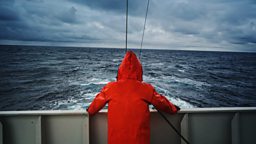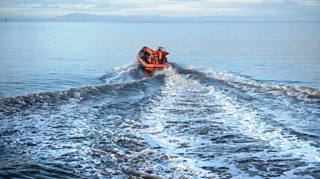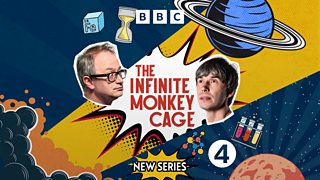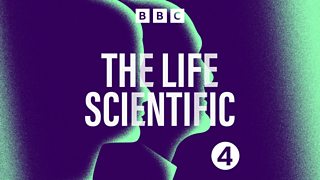The incredible story of a lobsterman at sea
When lobster fisherman John Aldridge fell into the ocean in the dead of night, his chances of surviving were slim. But John’s remarkable resilience, his friend’s rapid detective work and a crucial mathematical map saved his life.
In a gripping episode of Radio 4’s Uncharted, Hannah Fry recounts a race against time that saw rescuers use crucial data and complex calculations to bring John safely home.
Here’s how it happened…

When John fell overboard no one knew for hours
In July 2013, John was working alone on his boat off the coast of Long Island, USA, while his crewmates slept. As he tried to pull a heavy chest that was on top of a hatch in the deck, the handle snapped, sending him backwards into the dark waters.
“You're panicking and panicking and you don't know what's going on,” he recalls. “Your mind is just doing a thousand miles an hour.”
“Today's the day you're going to die.”
With the boat motoring away from him on autopilot and the rest of the crew asleep, John knew he was in trouble. He says all he could think was, “Today's the day you're going to die.”
In cold Atlantic waters, he was unlikely to survive for long
Anthony, John’s crew mate, woke at 6am to find his friend was not on the boat and no one had any idea when or where he had fallen overboard.
“You know that that far north, most people aren’t found,” Anthony says. “You can't stay in the ocean without getting hypothermia. So, the person that's in the water is screwed. This is a race against the clock.”
Adrift and alone many miles away, John was determined to survive. “Your brain [is] telling you that it's okay to die… It's a lot easier than suffering the way you're suffering,” he recalls. “And I took a breath and I said, ‘OK, well I'm not dying.’”
Sharks circled as John waited in the water
As he floated hoping to be rescued, John felt something brush his legs. “I saw two fins up. Two sharks swimming round me in the ocean.” He knew these might be harmless dog sharks, but they could also be bull sharks or even great whites.
“If they come after me, I'm going to fight them,” he remembers thinking as he gripped his pocket knife. Eventually, the fins disappeared and he was alone again.
The rescue team collated crucial clues to work out where he was…
Meanwhile, John’s rescue team had worked out he must have gone overboard between 9.30pm, when he was last seen, and 11.30pm, when he was supposed to wake a crew mate. They also knew the speed at which the boat was travelling and its direction.
By combining this information with data on ocean currents, wind and waves, and applying a clever equation, the coastguard’s search and rescue system was able to calculate where John should be. It produced a colour-coded probability map focused on a stretch of water between five and 20 miles south of the Long Island coast.
Soon, rescue boats and helicopters were speeding towards the dark red oval on the map.

…but when they scoured the water, they couldn’t find John
After nine hours in the water and baking under the midday sun, John was seriously struggling. He had found a floating buoy to grab onto, but instead of helping him stay afloat, it kept bobbing with the waves and pulling him under.
He could see the helicopters flying back and forth in the distance. “At least I know they're looking for me,” he recalls. “But they're not seeing me.”
John’s rescuers were searching in the wrong place. Soon, they realised this too.
John’s friend gathered new information, which changed everything
In a few hours’ time the coastguard vehicles would have to stop to refuel, which would take all night – too long for John to hold on. But if they were quick, they had a crucial second chance.
Anthony had remembered that John planned to switch on a new refrigeration system two hours before they reached the fishing grounds – which explained why he had tried to shift the crate that sent him overboard. This data, combined with radio reports from other boats, told him John had fallen into the water over two hours later than they originally thought.
Again, the numbers were fed into the search and rescue system. And again, it delivered a coloured map. This time, the dark red shape was further south. The rescuers sped off to find John, hoping they could make it in time.
John was preparing to die, until a helicopter appeared overhead
Incredibly, John was still alive, but he couldn’t go on much longer. “I figured, let me carve my name in my boots… I thought I was going to be staying there, dying on that buoy.”
But it wasn’t over. Soon, a helicopter was thundering overhead. “The rescue swimmer swam up to me. He didn't even have his wetsuit on. They never expected to find anybody, let alone me alive.”
As he was winched into the helicopter, John remembers how: “the pilot… whips his mask back and says, ‘Man, you got some will to live. We were up here all day looking for you.’ I told him I’ve got too many people that love me to die. I wasn't going out that way.”
Mathematician Hannah Fry’s Uncharted reveals the amazing insights and outlandish true stories that can be hidden behind the lines, dots and data on a graph. Listen to the full series now.
More from ���˿��� Radio 4
-
![]()
The Infinite Monkey Cage
Brian Cox and Robin Ince host a witty, irreverent look at the world through scientists' eyes.
-
![]()
Jon Holmes Says the C-Word
When Jon was diagnosed with cancer, he realised men don't talk openly about the embarrassing indignity of it all. So he decided he would, with other men who've been through it.
-
![]()
The Life Scientific
Professor Jim Al-Khalili talks to leading scientists about their life and work, finding out what inspires and motivates them and asking what their discoveries might do for us in the future
-
![]()
The Coming Storm
America through the looking glass - ahead of the 2024 presidential election, enter a world where nothing is as it seems. Gabriel Gatehouse investigates.





